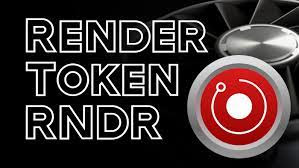Introduction
In the rapidly evolving landscape of cryptocurrencies and blockchain technology, staying informed about the latest developments and terminologies is essential. Polygon, formerly known as the Matic Network, is a layer 2 scaling solution for Ethereum that has been making waves since its inception in 2020. To fully comprehend and engage with the Polygon ecosystem, one must possess a considerable vocabulary to navigate through its various aspects.
The Ever-Expanding Vocabulary
Being a Polygon holder requires more than just a basic understanding of the crypto space; it demands a pretty extensive vocabulary. With each new application and update, a fresh list of names and terms emerges, often involving a learning curve. This linguistic landscape can be challenging, especially when names and terms evolve, as witnessed in the transition from Matic to Polygon. While the nomenclature might change, Polygon's significance remains unwavering. Staying abreast of the ecosystem's developments is the key to gaining a competitive edge.
Polygon: A Layer 2 Network Overview
Polygon, initially launched as the Matic Network in 2020, was designed as a scaling solution for Ethereum. Despite rebranding to Polygon in 2021, the token's name, "Matic," persisted. However, change is on the horizon, with the announcement that the primary token of the PoS (Proof of Stake) Polygon network will transition to "P" or "Pole." This change underscores the project's commitment to growth and innovation.
Utility of Matic Tokens
Presently, Matic tokens are employed for paying fees within the Polygon network and staking. Validator nodes on the blockchain also require Matic for operation, aligning with Ethereum's architectural principles. As Polygon operates as a Proof of Stake Network, its structure parallels Ethereum's merged ecosystem.
Bridging Ethereum and Polygon
Polygon operates as an independent blockchain linked to Ethereum through a two-way bridge. These bridges facilitate the seamless transfer of crypto assets between Ethereum and Polygon. Users can choose from the official bridge, which prioritizes security but requires more time, or third-party bridges for faster transactions.
ZkEVM: Advancing Scalability
Polygon's ZkEVM (Zero-Knowledge Ethereum Virtual Machine) is a zero-knowledge rollup technology designed to enhance scalability. This technology's promise lies in its potential for increased decentralization and security compared to existing layer 2 solutions on Ethereum. While ZkEVM is in its beta phase, it holds the prospect of revolutionizing transaction speed and privacy.
Supernets: Focused Blockchain Solutions
Polygon's introduction of supernets reflects a trend in the crypto space—building dedicated chains for specific use cases. These supernets leverage Polygon's PoS consensus mechanism to optimize blockchain functionality for singular applications. This approach enhances user experience and application performance.
Polygon SDK: Empowering Developers
The Polygon SDK (Software Development Kit) is a toolkit that includes modular libraries, tools, and documentation. This SDK allows developers to create applications on the Polygon blockchain by using programming languages like JavaScript, Python, and Go. Accessible development tools expedite application creation, supporting ecosystem innovation.
Lens and Aavegotchi are two emerging applications.
Polygon's ecosystem is already home to a number of cutting-edge applications. Lens, a social media platform, gives individuals control over their data. Aavegotchi, a cryptocurrency game, blends the notion of Tamagotchi pets with DeFi (Decentralized Finance) concepts, adding to Polygon's offers.
Recognition in the Media and Beyond
Polygon has received attention from mainstream entities such as Reddit and Starbucks, demonstrating its expanding importance. As the Polygon world expands, innovative technologies like PolygonScan provide a glimpse behind-the-scenes blockchain action. Don't forget about Polygon Copilot, which functions as a coding assistant with a dash of AI magic.
Final Thoughts
Moving around the Polygon playground requires a solid language arsenal that encompasses everything from terminology to applications. Staying up to speed with the lingo is essential for truly harnessing the power of this ever-changing blockchain universe. You'll be leading the charge in the Polygon revolution if you stay educated and adapt to changing terms.










